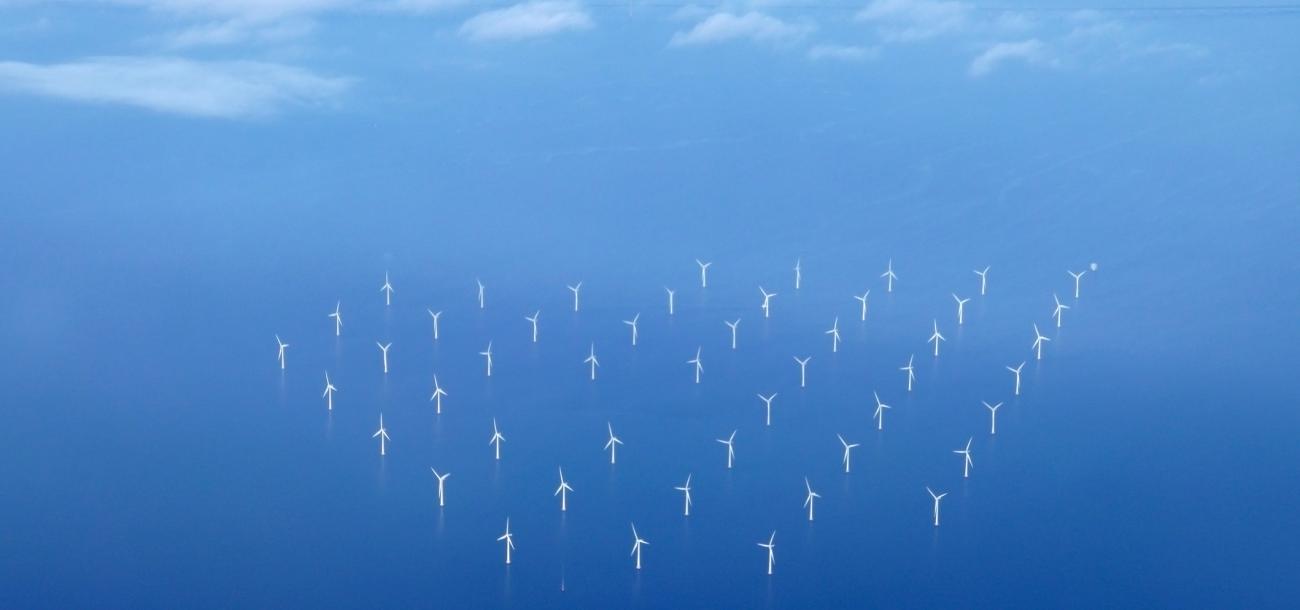Unleashing the wind: the Baltic Sea emerges as a pivotal player in Europe's new energy system landscape
In the drive towards energy independence, the potential of offshore wind in electricity generation has lately been increasingly and actively discussed. Across Europe, countries are unveiling ambitious plans for new offshore wind energy projects, with the Baltic Sea occupying a particularly significant place on the map of pending transformation. In this regard, Lithuania is taking its first steps, where Ignitis Renewables, an international green energy company, is developing the region’s first offshore wind farm project, Curonian Nord.
The momentum towards offshore wind is reinforced by the European Wind Energy Charter, signed by energy ministers from EU member states and over 300 energy companies last year. This agreement underscores the urgent need to bolster onshore and offshore wind industries to meet Europe's green objectives and achieve energy independence.
The Baltic Sea’s strategic importance in this energy revolution cannot be overstated, with its enormous wind energy potential being increasingly tapped in recent years, although there is still a long way to go before it is truly unlocked.
Ambitious national plans
The importance of the Baltic Sea in the wind energy sector cannot be overstated. Home to the world’s first offshore wind farm near Denmark’s Lolland Island, established in 1991, the region continues to lead in wind energy production.
Denmark dominates electricity production in the Baltic Sea, with half of the twenty wind farms currently operating in its waters. However, other countries surrounding the Baltic Sea are increasingly following the model.
The Baltic Sea’s relatively shallow waters and abundant winds are ideal for wind farm installations. Scientists and experts in the energy sector estimate the Baltic Sea’s wind energy potential is 93 gigawatts (GW), far surpassing current installations totalling just over 3 GW. With ambitious national plans underway, this figure will rapidly increase in the coming years.
“In a landmark declaration last year, eight states bordering the Baltic Sea committed to achieving a collective capacity of 19.6 GW from offshore wind farms by 2030. This ambitious goal aligns closely with the European Commission’s Green Deal, which aims to increase the EU's offshore wind capacity to 60 GW by the same year, replacing the current 32 GW. Remarkably, the Baltic Sea alone is set to meet one-third of the Community’s targeted capacity. Only the North Sea, which is significantly larger and windier, has greater potential,” stated the Head of Offshore Development at Ignitis Renewables Vytautas Rimas.
Currently, offshore wind farms in the Baltic Sea are exclusively operated by Denmark, Sweden, Germany and Finland, with Lithuania, Estonia and Latvia poised to join this exclusive group soon. Furthermore, new projects are planned in the countries that have already harnessed the Baltic Sea wind.
“One could say that a true wind energy breakthrough is beginning in the Baltic Sea, with some countries setting particularly ambitious targets. For instance Poland, which currently lacks offshore wind farms, plans to install 28 GW of capacity in its territorial waters by 2050. This would surpass even Denmark to become the leading electricity producer in the Baltic Sea,” said V. Rimas.
According to V. Rimas, this surge in ambition comes amid a heightened focus on energy security and sustainability, catalysed by geopolitical shifts and energy price volatility following Russia’s conflict with Ukraine. As emphasised by experts, investments in offshore wind not only enhance energy security, but also accelerate the transition to climate-neutral energy sources. “The inexhaustible nature of offshore wind power promises to reduce reliance on Russian fossil fuels significantly, aligning with broader environmental and national security imperatives. Moreover, electricity generation from wind is climate-neutral. Therefore, the development of offshore wind energy solves two European problems at once,” said the expert at Ignitis Renewables.
Small coastline – big potential
With the smallest coastline among Baltic Sea nations, Lithuania may not match the scale of its neighbours’ ambitions in offshore wind energy. Nonetheless, the country is poised to revolutionise its energy sector with significant strides in marine wind power.
According to the Baltic Energy Market Interconnection Plan (BEMIP), Lithuania holds a promising offshore wind potential of 4.5 GW. By the early 2030s, Lithuania will have developed its inaugural offshore wind farm, Curonian Nord, boasting a capacity of approximately 700 megawatts (MW). This venture is projected to generate 3 terawatt-hours (TWh) of clean electricity annually, meeting a quarter of Lithuania’s current electricity demand.
“While Lithuania’s Baltic Sea footprint may be modest, harnessing its wind resources could potentially exceed our domestic electricity needs. This surplus not only positions Lithuania favourably in the electricity export market, but also paves the way for investments in cutting-edge renewable technologies like green hydrogen production,” stated V. Rimas.
Beyond energy impact, offshore wind projects promise substantial benefits to the country’s economy. The initial phase of the Curonian Nord project alone is expected to attract billion-dollar investments, create high-skilled jobs and invigorate both the coastal economy and Lithuania’s infrastructure sectors, including transport and construction as well as the development of the Klaipėda port.
“Not to mention that once the offshore wind farm is operational, the project developer will provide direct support to local communities. Ongoing support from project developers will directly enhance local communities, funding transformative improvements along the coastline. This means that coastal residents will receive funds to finance significant changes for them,” emphasised the Head of Offshore Development at Ignitis Renewables.
You can find more information about the project at curoniannord.com.





